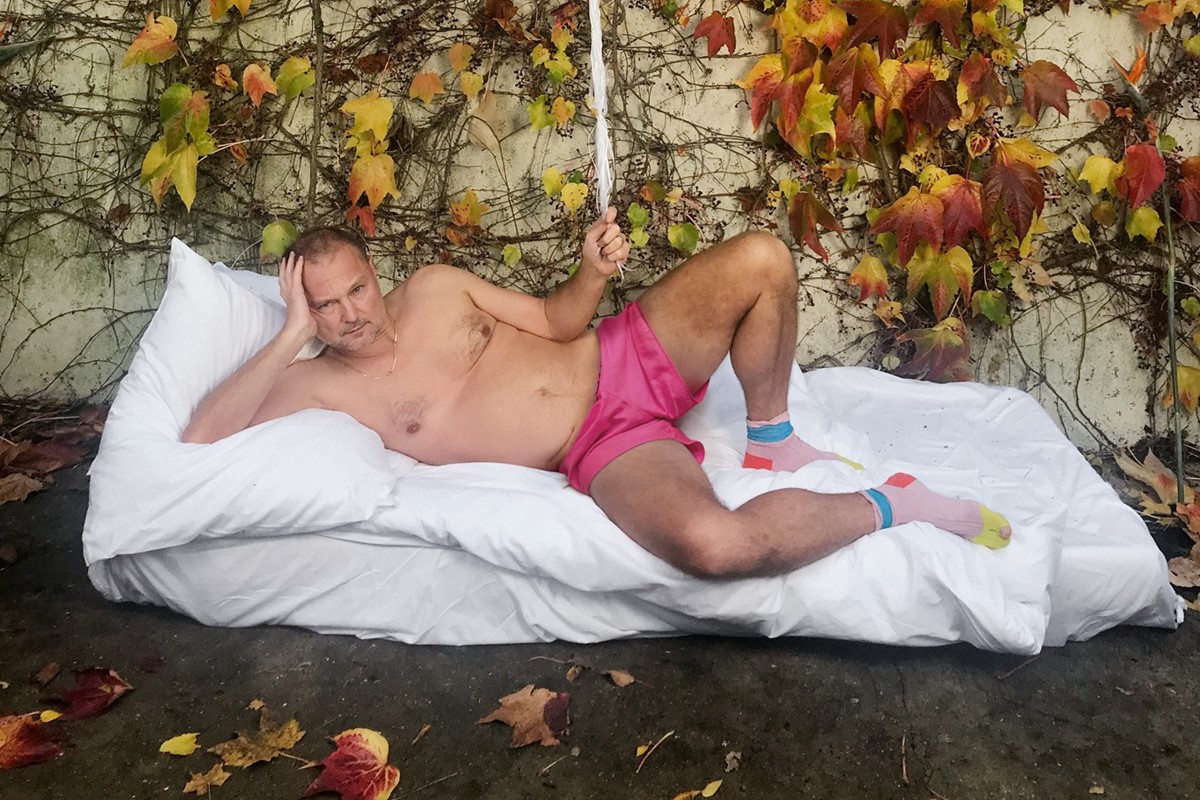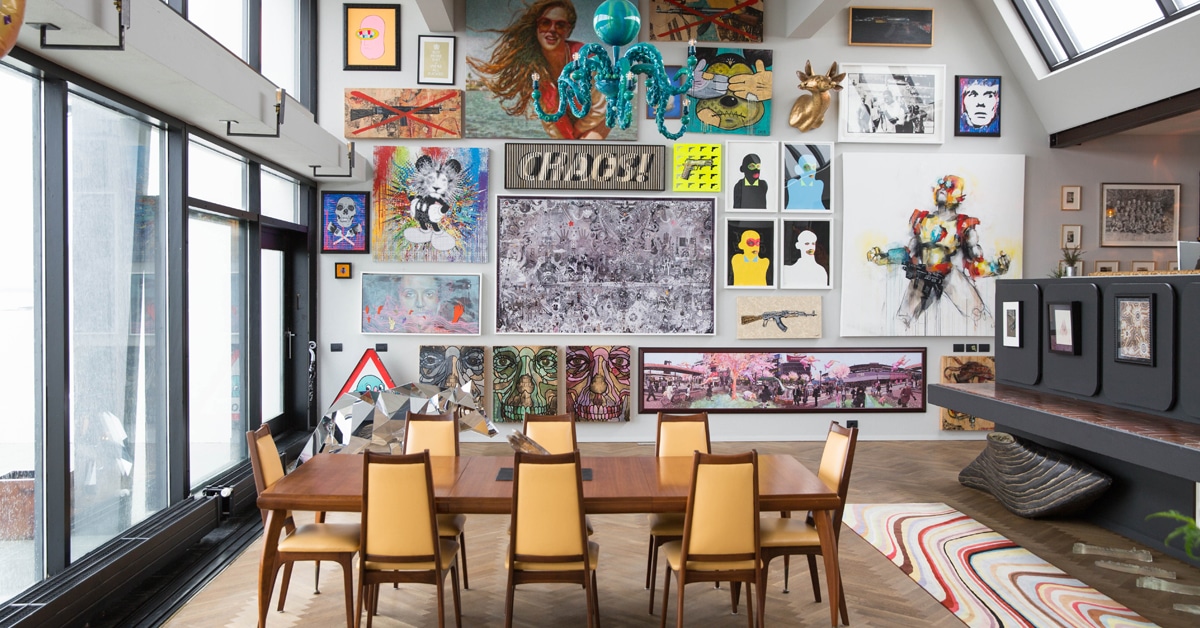N°001 Djoubi et sa meute
2018 - Photography (Photography)
77 x 114 cm
Laura Henno
N°001 Djoubi et sa meute is part of a series of photographs by Laura Henno titled Ge Ouryao! . This particular work depicts a young man named Djoubi posing proudly, surrounded by his pack of dogs, along the shoreline of Mayotte. Although Djoubi was born in Mayotte, his parents are undocumented migrants, so he is also considered ‘illegal’ under state law. The isolated staging of the photograph is purposely intended to allude to the peripheral nature of Djoubi’s status. Along with a number of other undocumented boys and men, he is part of a gang that calls itself the Bouchemen, a reference to the indigenous bushmen of southern Africa. They live on the beach in a Banga, a makeshift shack, protected by their herd of dogs. Aged between 10 and 20 years old, they survive on the fringes of society. Many are orphans or arrived on the island without their parents, some are alone because their parents were deported. The gang creates its own community guidelines; Djoubi is one of three men who manages and trains the dogs. For this project, Henno followed the Bouchemen for four or five hours each day, sometimes filming or photographing them, but often just sharing moments as they strolled along the beaches or fed from the nearby coconut or banana trees. The title of the project, Ge Ouryao! [Why Are You Scared!] is an expression that the Bouchemen use to provoke passers-by. It is a way of mocking the locals who fear the group and consider them delinquents. But the expression also reflects the pressure on the boys to grow up fast, to become tough while living on the margins of a society that largely rejects them. Henno’s photographic series subverts stereotypes and restores dignity, agency, and even greatness to the boys and men, as they live in a state of ostracization and uncertainty. The series also reflects the larger political situation and is evocative of the tension around illegal immigration in Mayotte; their post-colonial history; and the idea of a fifth island, which for the islanders symbolizes France, or the aspiration to become French—a promise of a better quality of life.
Laura Henno was trained as a photographer and studied film at Le Fresnoy – Studio National des Arts Contemporains. For several years, she has based her approach to photography and film on the issues of clandestine migration, in the Comoros, Réunion Island ; Calais ; and Rome. She confronts herself, with a documentary aim that reinvests reality with the potentials of fiction and storytelling. The resulting images provoke a disturbance and draw from pictorial and cinematographic codes.
Colors:
Related works sharing similar palette

© » KADIST
Tobias Fike & Matthew Harris
2013Facing one another, each projection screen of the work Food Fight respectively features Tobias Fike and Matthew Harris preparing multi-course meals at a kitchen counter...

© » ARTS EQUATOR
Podcast 45: On Southeast Asian Film with Rithy Panh and Park Sungho | ArtsEquator Thinking and Talking about Arts and Culture in Southeast Asia ArtsEquator Viewpoints August 23, 2018 Duration: 35 mins At SeaShorts 2018 , which took place from 1 – 5 August 2018 in George Town, Penang, we caught up with Cambodian film director, screenwriter and producer Rithy Panh, and Park Sungho, programmer for S-Express Cambodia (a selection of Cambodian short films at SeaShorts), who’s also a programmer for the Cambodia International Film Festival ...

© » ANOTHER
50 Questions With Juergen Teller | AnOther December 13, 2023 Text Ted Stansfield Lead Image Self-Portrait with pink shorts and balloons, Paris, 2017 © Juergen Teller, All rights Reserved It’s not an overstatement to say that Juergen Teller is one of the most influential photographers working today...

© » KADIST
D’Angelo Lovell Williams
2018On January 7th, 2020, artist D’Angelo Lovell Williams was diagnosed with HIV...

© » ARTS EQUATOR
Book Review: "The State and The Arts in Singapore: Policies and Institutions" | ArtsEquator Thinking and Talking about Arts and Culture in Southeast Asia Articles Images courtesy of Institute of Policy Studies, Singapore April 9, 2019 By Chin Ailin (734 words, four-minute read) Commissioned by the Institute of Policy Studies of Singapore (IPS) to trace the course of cultural policy in Singapore from the 1950s to the present, The State and the Arts in Singapore: Policies and Institutions is a comprehensive tome that should serve as an essential text in time to come for any student’s introduction to Singapore’s arts and cultural policies...

© » ARTS EQUATOR
MervEspina and the Green Papaya Art Projects (via The Myanmar Times) | ArtsEquator Thinking and Talking about Arts and Culture in Southeast Asia Articles September 22, 2018 With the support of Japan Foundation and collaboration of Myanm/Art, MervEspina, artist and researcher from Philippines talked about Green Papaya Art Projects whose essence can be rendered as ‘never ripe, never rotten’...

© » SOUTH CHINA MORNING POST
French artist’s sea-life sculptures amaze and terrify in Hong Kong exhibition at Tai Kwun | South China Morning Post Advertisement Advertisement Art + FOLLOW Get more with my NEWS A personalised news feed of stories that matter to you Learn more French artist Jean-Marie Appriou with some of his sea-life sculptures at his exhibition “Magnetic” at Tai Kwun, Hong Kong...








.jpg)




